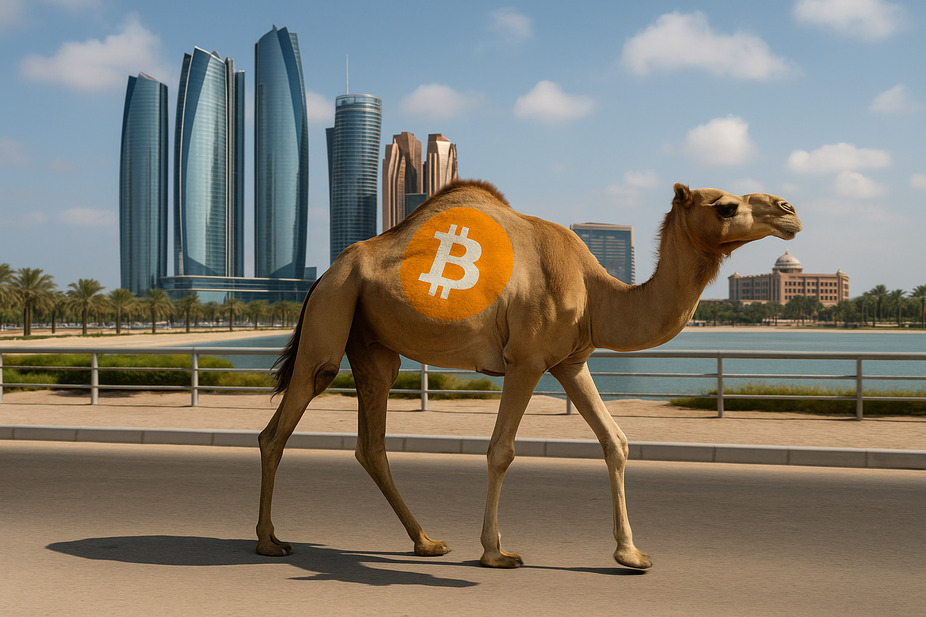From the bustling streets of Nairobi to the vibrant markets of lagos: how stablecoins are becoming a lifeline against skyrocketing inflation

Imagine trying to save money or send important funds to family when your local currency is losing value all the time, and traditional banking fees take up a lot of every transfer. For millions of people across Africa, this isn’t just something they can imagine; it’s their reality. But in cities like Nairobi and Lagos, people are starting to use stablecoins like USDT and USDC. These “digital dollars” are proving to be useful tools for dealing with inflation, avoiding expensive transfer fees and easily moving money through popular mobile wallets like M-Pesa.
This isn’t just about tech-savvy early adopters anymore. Stablecoins have genuinely become everyday essentials for savings, payments, and trade. The relentless grind of inflation, wild swings in foreign exchange rates, and the exorbitant cost of sending money home are driving this adoption. And because these digital currencies often link up with mobile money systems, they feel surprisingly familiar and practical to use. Of course, like any new financial tool, there are still worries about how well they’re backed, the risk of scams, and ever-changing regulations.
Real people, real solutions
Meet Amina in Nairobi. On a normal Tuesday morning, she sends a client an invoice from Berlin. By the afternoon, USDC has been added to her digital wallet, and within minutes, she’s used it to top up her M-Pesa account. What was once seen as something from the future is now just part of her everyday life, thanks to services like Kotani Pay that connect stablecoins with mobile money.
Across the continent, in Lagos, Chinedu runs a small shop. He keeps his working capital in Tether’s USDt. For him, having these “digital dollars” means he can restock imported goods without worrying about his profits being eroded by the naira’s frequent changes in value.
Chinedu isn’t the only one. Nigeria, a major player in the region, saw almost $22 billion in stablecoin transactions between July 2023 and June 2024 – a huge amount that far exceeds the volumes seen in other Sub-Saharan African countries.
The appeal is purely economic. Sending money into Africa through traditional channels can still cost an average of a whopping 8.45% (as of Q3 2024). Even digital-first platforms, while better, hover around 4%. But when you add a stablecoin into the mix, combined with a reliable way to cash out locally, the savings become significantly sharper. This is especially true for the $200-$1,000 transfers that keep countless families afloat and small businesses thriving.
While costs can vary by market, the fundamental idea holds true: for millions battling inflation, currency controls, and the world’s most expensive remittance corridors, stablecoins offer a powerful way to hold value and move money, often with nothing more than a smartphone.
The economic squeeze: inflation, FX chaos, and remittance headaches
Nigeria’s cost-of-living crisis, though slightly eased from early-2025 peaks, remains severe. Inflation is still affecting people, with the Consumer Price Index (CPI) at 21.88% in July 2025, far above targets and slowly reducing people’s buying power. Currency reforms since 2023, including multiple devaluations and attempts at a more market-driven exchange rate, have only increased short-term price changes, leaving households and importers trying to price essential goods in US dollars.
Kenya faces a similar, though milder, struggle. Inflation rose to 4.5% in August 2025, driven by rising food and transport costs, while the shilling’s unpredictable swings continue to increase demand for US dollars among traders.
Layered on top of this is the grim reality of global remittances. Sub-Saharan Africa remains the most expensive region to send money to, averaging 8.45% in Q3 2024. This is far above the UN’s 3% Sustainable Development Goals target and higher than the global average of 6%. For families trying to send $200 or $500 home, those fees aren’t just an inconvenience; they can be the difference between making rent or falling behind.
These relentless pressures are precisely why stablecoins have emerged as a practical lifeline for freelancers, traders, and small businesses from Nairobi to Lagos. (Did you know Nigeria’s diaspora sent about $19.5 billion home in 2023, accounting for roughly 35% of all remittances to Sub-Saharan Africa?)
Why stablecoins? The practical economics
If you earn money from more than one country or want to save in a local currency that is losing value, stablecoins are like “digital dollars” because they have two clear benefits: You can send and receive money at any time of the day or night, and the fees are often much lower than for traditional money services, especially for international transfers. This combination of speed and affordability is the reason why they are so popular in emerging markets.
You can see this happening in the part of Africa south of the Sahara. Research by Chainalysis shows that stablecoins (a type of cryptocurrency that is linked to a fiat currency like the US dollar) now make up the largest share of everyday crypto activity. In Nigeria, stablecoins were used most often for transactions under $1 million, totalling nearly $3 billion in the first three months of 2024. Across the whole region, stablecoins now account for a significant 40%-43% of all crypto volume.
Tether’s USDt and USDC are still the most popular. The Tron network is a popular choice for moving USDT because it is both cheap and efficient. By mid-2025, it had the largest share of USDT’s supply. People always go for the cheapest and most reliable option.
How it works on the ground
- Getting In and Out (On-/Off-Ramps and P2P): In Kenya and Nigeria, most people acquire USDT or USDC through a combination of regulated fintech companies and peer-to-peer (P2P) marketplaces. They then cash in or out via banks or mobile money. Yellow Card, for instance, operates in about 20 African countries and handles most of its transfers in USDT. Their Yellow Pay service connects users across borders and supports local cash-outs, including mobile money. Today, stablecoins make up a staggering 99% of Yellow Card’s business.
- Mobile Money Bridges: In East Africa, mobile wallets like M-Pesa form the backbone of financial transactions. Companies like Kotani Pay provide crucial conversion services, allowing partners to settle in stablecoins and then pay directly into M-Pesa. Mercy Corps, in a Kenya pilot, successfully used Kotani to test USDC-to-M-Pesa savings, demonstrating a straightforward flow: receive USDC, convert to shillings, and spend through the same familiar mobile wallet.
- Invisible Crypto by Fintechs: Some companies integrate crypto so seamlessly that users don’t even realize it’s there. Chipper Cash, for example, uses USDC behind the scenes to move dollars instantly across its network. They’ve also adopted Ripple’s technology to facilitate funds transfers into nine African markets. For customers, it simply feels like a faster, cheaper version of their usual mobile wallet experience.
Everyday uses:
- Savings: Converting small balances into “digital dollars” to protect against runaway inflation.
- Payroll and Gigs: Freelancers and creators often receive payments in USDC, converting only what they need into local currency.
- Trade and Inventory: Small and medium-sized businesses use stablecoins to settle invoices and pay suppliers. Yellow Card reports business payments as one of its fastest-growing segments.
- Remittances: Stablecoin transfers with local cash-out options frequently outperform traditional remittance services, particularly for those crucial $200-$1,000 transfers.
It’s worth noting that mobile money is already ubiquitous, with over 2 billion registered accounts worldwide, and Sub-Saharan Africa is at the heart of this trend.
The shifting sands of regulation
The regulatory landscape in Africa is a bit of a moving target.
- Nigeria: The official stance has dramatically shifted over recent years. From outright prohibition, it moved to cautious permission, and now seems to be leaning towards stricter policing. In December 2023, the Central Bank of Nigeria lifted its ban on banks interacting with virtual-asset service providers (VASPs). However, 2024 saw a complete turnaround: authorities cracked down on naira P2P venues and Binance, detaining executives, halting naira trading pairs, and warning of new rules against illicit trading. Disputes continued into 2025. Meanwhile, Nigeria’s Securities and Exchange Commission updated its crypto framework in January 2025, and the new Investment and Securities Act (ISA 2025), now law, clarified registration duties for digital-asset firms. Expect more scrutiny on licensing, disclosure, and marketing.
- Kenya: The Finance Act 2023 introduced a 3% Digital Asset Tax, which the Supreme Court upheld in late 2024. But policy shifted again in mid-2025, with the Finance Act 2025 repealing that levy and replacing it with a 10% excise duty on fees charged by virtual-asset providers. Now, users and operators alike need to keep track of excise, VAT/DST, and new reporting obligations.
Ultimately, these frameworks are evolving incredibly fast. Always check the latest local guidance before choosing a provider. (Did you know about one in six Kenyan adults lacks any formal financial account? As of 2021, formal financial inclusion reached 83.7%, meaning 11.6% of adults were completely excluded.)
Understanding the risks
While stablecoins offer solutions for speed and cost, they come with their own set of risks, mainly falling into three categories:
- Peg and Counterparty Risk: Stablecoins are only as reliable as the reserves and governance backing them. Institutions like the Bank for International Settlements and the International Monetary Fund warn that rapid growth could trigger financial instability – everything from forced sales of reserve assets to “dollarization” that undermines local monetary control. The USDC “de-peg” in March 2023 showed how quickly confidence can erode. Independent reviews also highlight transparency gaps and issuer concentration as ongoing concerns.
- Operational Risk: On the ground, everyday risks include P2P scams, wallet thefts, bridge failures, and difficulties in actually cashing out your funds. Regulatory crackdowns can make things even worse; Nigeria’s actions in 2024-2025 froze accounts and stranded balances overnight, demonstrating how quickly access can disappear.
- Policy Risk: At a larger system level, a heavy reliance on dollar-linked stablecoins can speed up informal dollarization and push payments outside regulated banking channels. In response, policymakers are increasingly pushing for tighter licensing, stricter reserve standards, and more disclosure from issuers. (At the 2025 Stablecoin Summit in Lagos, SEC Director-General Emomotimi Agama declared, “Nigeria is open for stablecoin business, but on terms that protect our markets and empower Nigerians.”)
What’s next for stablecoins in Africa?
Stablecoins won’t instantly solve inflation or change foreign exchange policy. But they are already saving, getting paid, and sending money across borders cheaper and faster for many people in cities like Nairobi and Lagos. Their clever use of mobile money makes them feel practical and easy to use.
Some people who come up with new ideas think that stablecoins are very useful. On the other hand, regulators are concerned about dollarisation and the overall financial stability. The balance between these two forces will decide what happens next.
For those on the ground, the safest approach remains straightforward: keep costs low, stick with trustworthy providers, and stay vigilant as the rules continue to evolve. What’s likely ahead are clearer disclosure requirements, tougher licensing, and more “crypto in the background” services – where users don’t even realize tokens are being used, they just experience value moving instantly and at a much lower cost.








